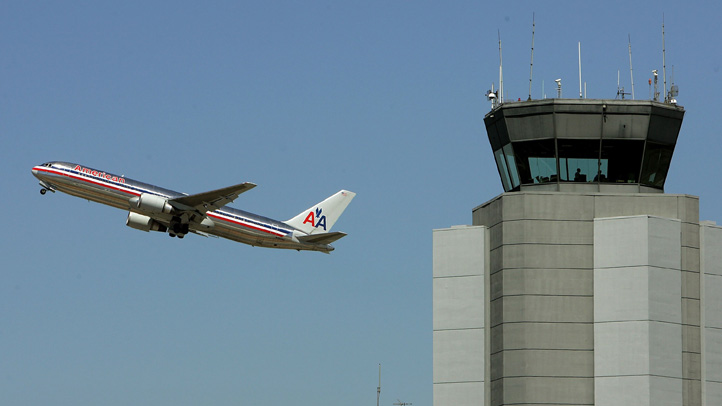American Airlines, which is slipping farther behind beefed-up rivals United and Delta, could bulk up through a merger with US Airways.
That idea has been floated before. But it's more likely now that American's parent company, AMR Corp., has filed for bankruptcy protection, some analysts say. American will use the bankruptcy process to reduce debt and cut costs that made it untouchable.
American and US Airways declined to comment on whether they would consider a merger, or have talked about it. History suggests they will.
US Airways CEO Doug Parker -- whose company is the product of a merger during bankruptcy -- is a longtime advocate of such combinations. His airline has approached rivals several times over the years about potential tie-ups. In April, Parker said that if United, Delta or American wanted to make a deal, his was the last one left among the biggest airlines.
"They made a run at Delta (while it was in bankruptcy), they made a run at United ... and you can bet that they'll make a run at American in the (bankruptcy) court," said Gordon Bethune, who as CEO led a turnaround at Continental Airlines in the 1990s and was hired by Delta creditors to assess the US Airways takeover bid.
Why an American-US Airways deal makes sense:
American and US Airways are mired in third and fourth place, respectively, behind United and Delta in both passenger traffic, the usual yardstick by which airlines are measured, and in revenue.
Local
The latest news from around North Texas.
It's nearly an article of faith among airline executives and some investors that big is better. Corporate travelers in particular are drawn to the airline with the most impressive route map and flight offerings.
Just three years ago, American bragged about being the biggest airline in the world. It could reclaim that perch -- or come very close to it -- by merging with US Airways. The combined company would leapfrog over Delta Air Lines Inc. and would rival United Continental Holdings Inc. for first place in passenger traffic. AMR and US Airways had combined 2010 revenue of $34 billion, about $2 billion more than Delta.
If American wants to grow, analysts say, the most plausible partner is US Airways -- it's big enough to add meaningful bulk to American's network. American would add US Airways hubs in Phoenix, Charlotte, N.C., a business-travel market because of its concentration of banks, and Philadelphia. US Airways is strong in the Southwest and the Southeast, where American is relatively weak.
Ray Neidl, an analyst with Maxim Group LLC, said US Airways would also add bring more aggressive management to the combined company, "which American would need to regain its proper place in the industry."
Why a deal doesn't make sense:
Others analysts believe that if American can reduce debt and labor costs -- including dumping pension obligations on the federal government -- it could thrive on its own.
American has a strong network of flights to Latin America, valuable international partners in British Airways and Japan Airlines, and a heavy presence in the five largest U.S. markets.
"US Airways needs American more than American needs US Airways," said Henry Harteveldt, a travel-industry analyst in San Francisco. "American could launch a hub in any US Airways city and capture a good bit of the corporate business."
Bethune said American can emerge from bankruptcy ready to join United and Delta in a Big Three. "They've got a great franchise, they've just got to get their costs in line. American can do it on a stand-alone basis. They certainly don't need" US Airways.
Then there's the labor issue, often one of the messiest in airline mergers. American and US Airways employees are represented by different unions, and both airlines have a history of trouble when combining workforces in previous acquisitions.
American's fate is in the hands of its creditors and the bankruptcy judge. John Thomas, head of the aviation practice at L.E.K. Consulting, said American would be more valuable to creditors if it's broken up -- the Latin American routes, the frequent-flier program, major hubs and the American Eagle regional-flying affiliate could all be sold separately.
What it means to the industry:
More consolidation would reduce competition and likely lead to higher fares for consumers. This would help airline profits, but the companies might benefit even if American and US Airways remain independent.
American is already considering how to reduce its size. New CEO Thomas Horton said Tuesday that the airline expects to make modest reductions in flying as it restructures in bankruptcy. Most analysts think the cuts will be bigger than Horton is signaling.
Jamie Baker, an analyst for J.P. Morgan, said airlines have consistently used bankruptcy to drop unprofitable routes.
"As the only loss-producing airline of size, AMR should have little difficulty in identifying where to cut," Baker said.
AP airline writers Joshua Freed in Minneapolis and Samantha Bomkamp in New York contributed to this report.
 Find complete coverage of the American Airlines Bankruptcy proceedings, expert analysis, and impact to customers and the local economy in our special section. Click here for more. |



